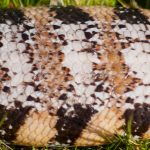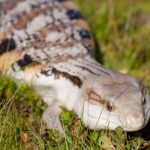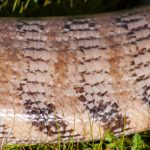I created a page for the ‘Latest and the Greatest’ of my female Northern BT breeders. The entire group has greatly expanded with a variety of young breeders — and best to start there using this Link.
Original Females from 2018 Displayed Below
These are some of my original adult females in the breeding colony. Five of them bred in Feb. 2018 and one of them, Artemis, got the year off to vacation and recuperate. The last two on this page I obtained well after the 2018 breeding season.
(Note — to enlarge photos click on the double arrow icon that appears when you mouse over the photos.)
Athena — Female — born May, 2015
Athena and Phoebe are sisters. Athena produced 10 babies on June 8th, 2018.
Cybele — Female — born June, 2015
The small amount of scale damage on her shoulders from breeding a month ago is healing well. Cybele and Kalypso are sisters.
Kalypso — Female — born June, 2015
She has notable scale damage on her back from breeding but it is healing. Kalypso and Cybele are sisters. Kalypso produced 7 babies on June 24th, 2018.
Io — Female — born June, 2015
Io is unusual looking with her aberrant colors. The banded pattern is present but she lacks the normal black and orange — leaving her a predominate silver or platinum coloration. Both her parents and her litter mates were normal black & gold Northern Blue-tongues. Assuming this is a genetic trait, it is probably recessive, and most likely her babies will display a normal phenotype.
This is her first year breeding, and she was crossed with normal black & gold males. Io is quite large, the third largest of the females.
Phoebe — Female — born May 2015
Phoebe was left with probably the worst of the bite marks from the breeding in February, but it is healing. Phoebe is a litter mate of Athena.
Artemis — Female — 7-years old — born 2013 Artemis is about 21-inches in length and has a great temperament.
Artemis breed and produced 10 babies in June, 2015. I gave did not try to breed her in 2016 so she could rest for a year.
Artemis bred again in early 2017 after cooling her a few weeks. She appeared to be gravid, her girth expanding as she showed loss of tissue at the hips and along the spine. She went through the entire gestation cycle but in June 2017 she threw numerous enlarged but unfertilized ova.
These are large unpleasant looking amber masses (look like nodules of earwax) that can vary in size from about an inch to to two or three inches. These can sometimes accompany live births as well. Females will often eat these undeveloped masses, so I leave them in the tank for a few hours. This may be an evolutionary trick to avoid wasting nutritional resources or to clean up the birthing area. Healthy babies eat their own egg sacks for their first meals but more on this later.
Artemis produced 8 healthy babies (and one stillborn) in 2018. In 2019 Artemis was still a little thin from breeding the year before, and I did not try to breed her.
In 2020 she bred in early February and produced 10 babies on May 25th, 2020. She has gained much of her weight back and should be ready to breed in 2021.
Photos of a Gravid Female
These are photos of Athena taken on 5/23/18 showing her enhanced girth as she closes in on giving birth. She is going into shed, with opaque skin, dulling her coloration.
Athena gave birth 10 healthy babies on 6/08/18. Athena took the year off in 2019; she bred again in February 2020 but did not produce babies. She has grown larger and heavier and I am confident she will produce babies again in 2021.
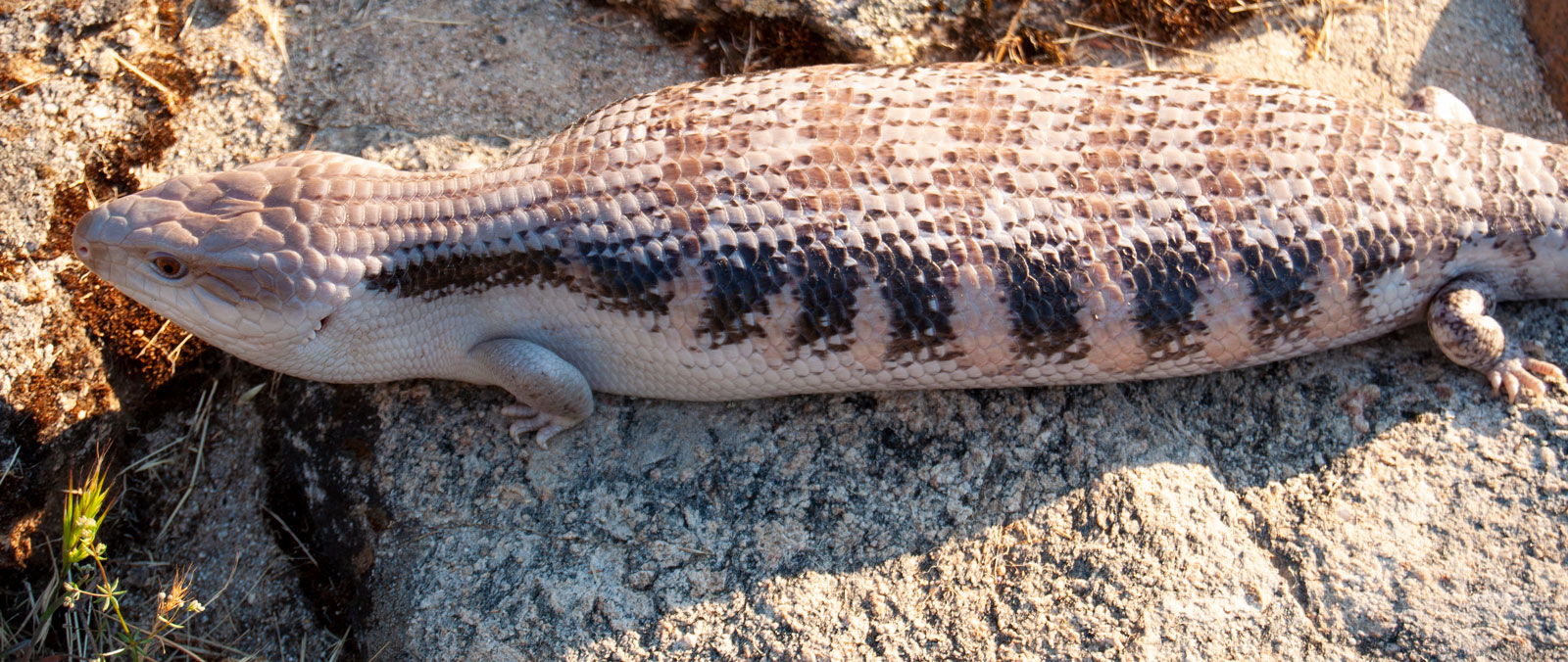


In 2018, I added two more adult females to my breeding group. One produced babies in 2018 and I acquired her, along with one of her babies, from a reptile collector in the Midwest.
The second female, born in 2015, is a spectacular orange Northern blue-tongue produced in Europe, and unrelated to U.S. lineages. The first female, Hypatia, is probably around 6 years of age.
I have several other Northern blue-tongues, not pictured, that will be added to the breeding group in 2021.
(Note — to enlarge photos click on the double arrow icon that appears when you mouse over the photos.)
The second female, Zoya, is a little smaller in overall body size; Zoya produced 8 babies in 2019 and has bred again in 2020. Unfortunately, Zoya gave birth to several still born babies in June 2020. For unknown reasons, only one baby was born alive and healthy. That baby is eating and growing well and in excellent health.
Elektra was born in July of 2018. She was produced by a breeder back East and described as a “Turner/Sunset”.
However, such lineage attributions are vague and not especially informative. They tell us nothing about the actual origins of the skink’s ancestors in Australia and very little about the genetics. At this point they seem primarily useful for marketing the skinks. Personally, I mainly use these “lineages” to try and avoid inbreeding the skinks.
Elektra was bred with two different males in early February, 2020. On May 13th she produced 8 live babies, all healthy.
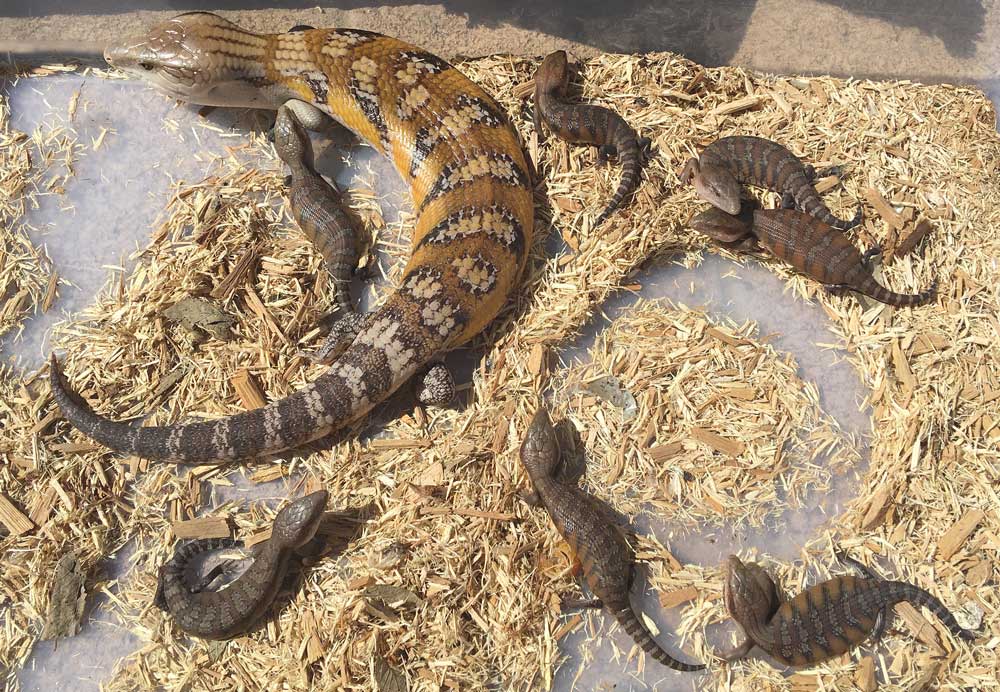
Selene was born in June or July 2018 and was also described as of “Turner/Sunset” lineage. She bred in February 2020 and produced 8 healthy babies on May 20th. Harlan (AKA HAL9000) was one of the two males used to breed her.


























